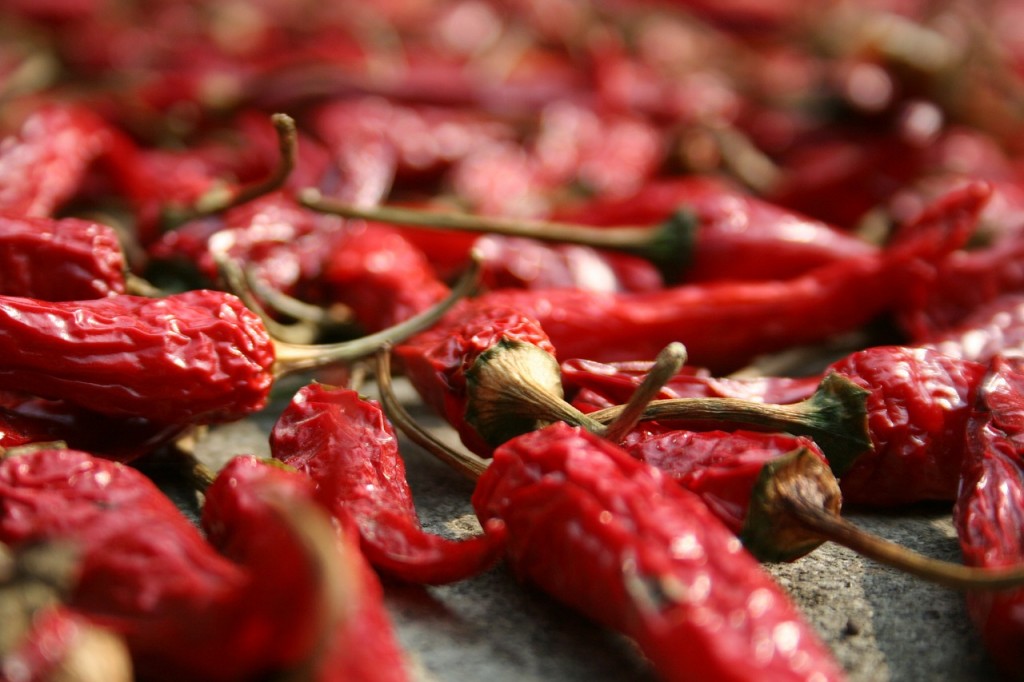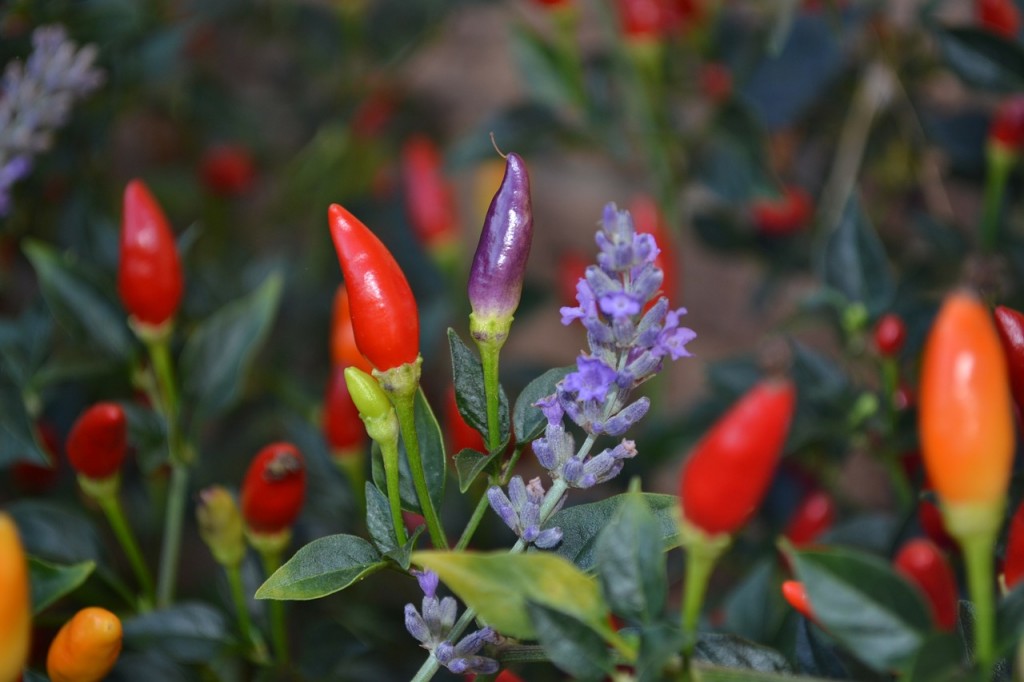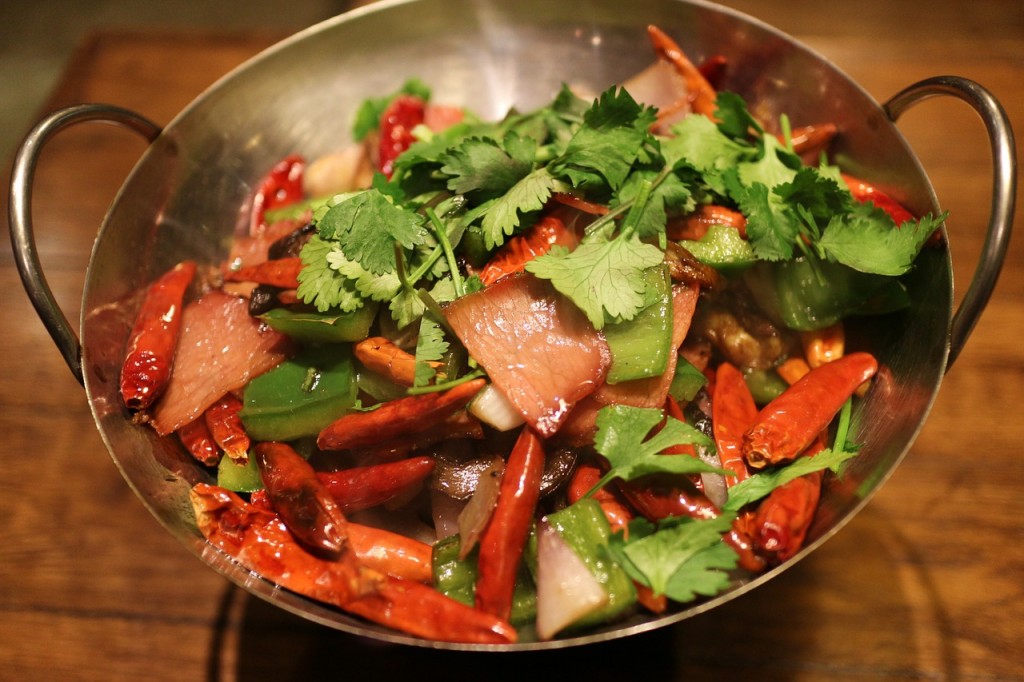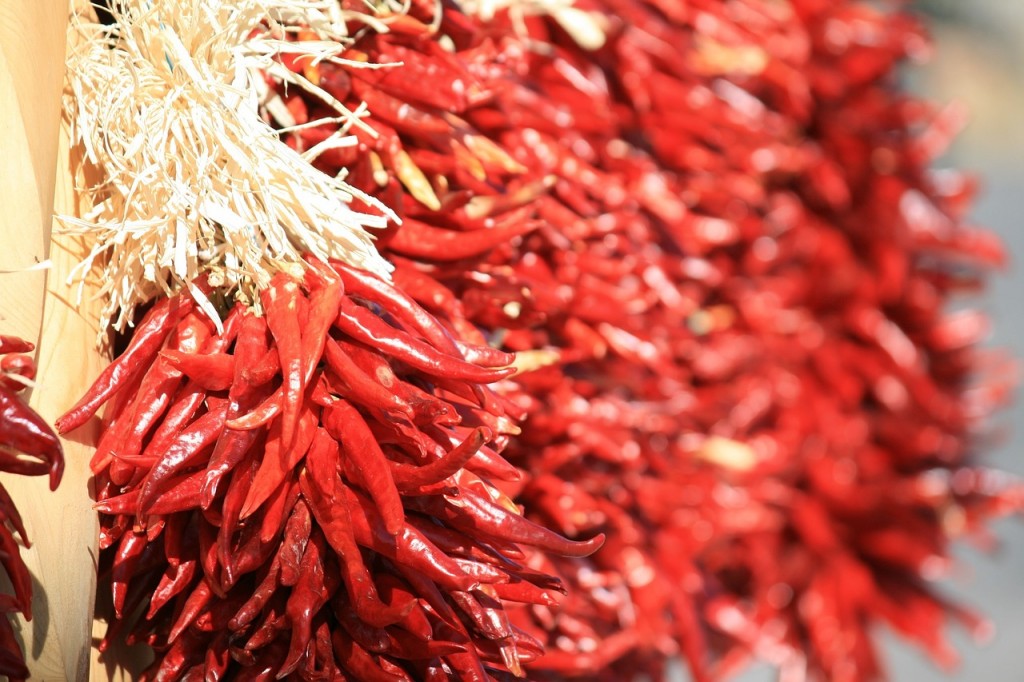Chillies: we Brits love ‘em!

Over the past decade the English palette has become used to an increasing amount of tastes and flavours from around the world.
This is down to a wide range of influences including emigration, TV celebrities, cheaper air travel; allowing more and more people to fly to far away destinations and the general increase in the number of quality restaurants around the country as a whole.
One ingredient which is used throughout the world from South America to Singapore is the humble chilly.
Studies have shown that they have been a part of the human diet in the Americas since 7500 BC.
Although chillies do contain high amounts of vitamin C and carotene (pro vitamin A) perhaps one of the main reasons why they are so popular is the flavour and sensation associated with eating them.
Sales of chillies continue to rise according to the research company TNS. The telegraph reported that sales of fresh chilli peppers have increased by over 40% in the last two years back in July 2009.
Why grow your own chillies?

Simple: it’s fun and easy!
Despite many people thinking that it is very hard to grow your own chillies, it is actually rather easy providing that you have the right equipment and location.
Chillies thrive when they are in a sunny, sheltered location ensuring that they are regularly fed and watered. This makes them perfect for growing in greenhouses, conservatories and even on a sunny windowsill for some of the smaller varieties.
Which species of chilli should I grow?
Whilst there are hundreds of different varieties of chillies around the world, if you are growing chillies at home you will probably want to opt for a variety which grows into small or medium sized plant.
There are considerations; are you growing them for decoration or to use in the kitchen?
The Trinidadian Scorpion produces a beautiful display of fruit, but you should beware; if you are thinking of using it in your next culinary master piece it might blow your socks off.
Popular Chilli peppers
- Jalapeno – green fruit turn red
- Joe’s Long – extra long red fruit
- Habanero – very hot orange fruit
- Hungarian Hot Wax – not too hot, yellow fruit turn to red
- Cayenne – glossy, red fruit
When to sow chilli seeds
To germinate chillies successfully the optimum temperature is between 18 and 22 degrees with lots of light. Chillies seeds should be sown between early February and April depending on if you have a heated greenhouse or a heated propagator.

Top Tip
To speed up chilli seed germination soak the seeds for between 12 – 24 hours prior to sowing.
Sowing Chilli seeds
Step 1
Fill seed trays or small pots with seed compost and water with tap water. Be careful to use tap water rather than harvested rain water as it may contain bacteria which could cause disease.
Step 2
Place half a dozen chilli seeds in the chilli pots taking care to ensure that they are evenly spaced out (this will make potting out easier and quicker). Cover with a thin layer of compost and place inside your heated propagator. We recommend investing in a digitally controlled propagator such as the award winning Vitopod heated propagator from Greenhouse Sensation.
Growing on
When the chillies have germinated and grown to between 2-3 inches they should be transferred to larger pots, ensuring that the root ball is not damaged in the process. Carefully separate the chillies apart keeping as much compose on the soil as possible. Carefully tease the roots apart to ensure continual strong grown. Whether you are using traditional chilli pots, or a specialist Chilligrow, it is important to use new compost. As mentioned earlier chillies are greedy plants and like when growing tomatoes require on-going feeding and water.
WARNING – Chillies do not like to be over watered, but at the same time they do need enough water. If growing chillies for harvesting you can dramatically increase your chilli yield by using the specially designed Chilli grow. With its large capacity reservoir it ensures that your chillies never go thirsty or hungry again, without the risk of over watering.
Pest control
Slugs and Snails
Chilli plants are particularly susceptible to slugs and snails. Whilst you can use slug pellets to control them we would recommend more environmentally friendly solutions such as copper rings round the base of the plant, crushed egg shells, ground coffee and even the old half grapefruit submerged just below the soil level filled with beer.
Mould
Chillies are highly susceptible to mould when grown in this country. Mould can occur on the stem of the plant, leaves and even the fruit. The typical cause of this is over or under watering, again the use of Chilligrow alleviates this problem.
Harvesting the chillies
All being well you have produced a bumper crop of chillies, now it comes to harvest time. Typically harvesting the chilli crop will usually take place in late July to late September depending on the variety, growing conditions and the month off germination. Some chillies may not ripen on the bush in the UK however if there is no need for them to be picked we suggest leaving the chillies on the bush for as long as possible (even if they are starting to dry up). It is important that the fruit is harvested before the cold damp autumn weather sets in though to avoid damaging the fruit.
Storing chillies
Whilst fresh chillies are lovely to use in cooking you can never eat them all. Therefore it is important to store chillies correctly to avoid damage to the fruit. After all that hard work you don’t what the fruit to spoil!
If some of your chillies haven’t turned red like they were supposed to place them inside paper bag with a banana.
Drying chillies is easier when they are still on the brand, remove the branch and hang upside down in a cool dry place with plenty of ventilation. (I personally hang them from the rafters in the garage like drying garlic or onions.)
Cooking with chillies (My favourite bit)

There are numerous recipes to enjoy your home grown chillies. My personal favourite comes from my time in Malaysia where I was lucky enough to work closely with a Malay chef.
Malaysian Sambal Sauce
This is famous throughout South East Asia in one form or another. Fresh chillies are pounded together in a pestle and mortar together with a shrimp paste. Lime juice is added along with seasoning. This chilli sauce is excellent as a marinade for meat and fish. There are many variations on this recipe however this was my preferred from all the ones I tried.
Happy chilli growing!



